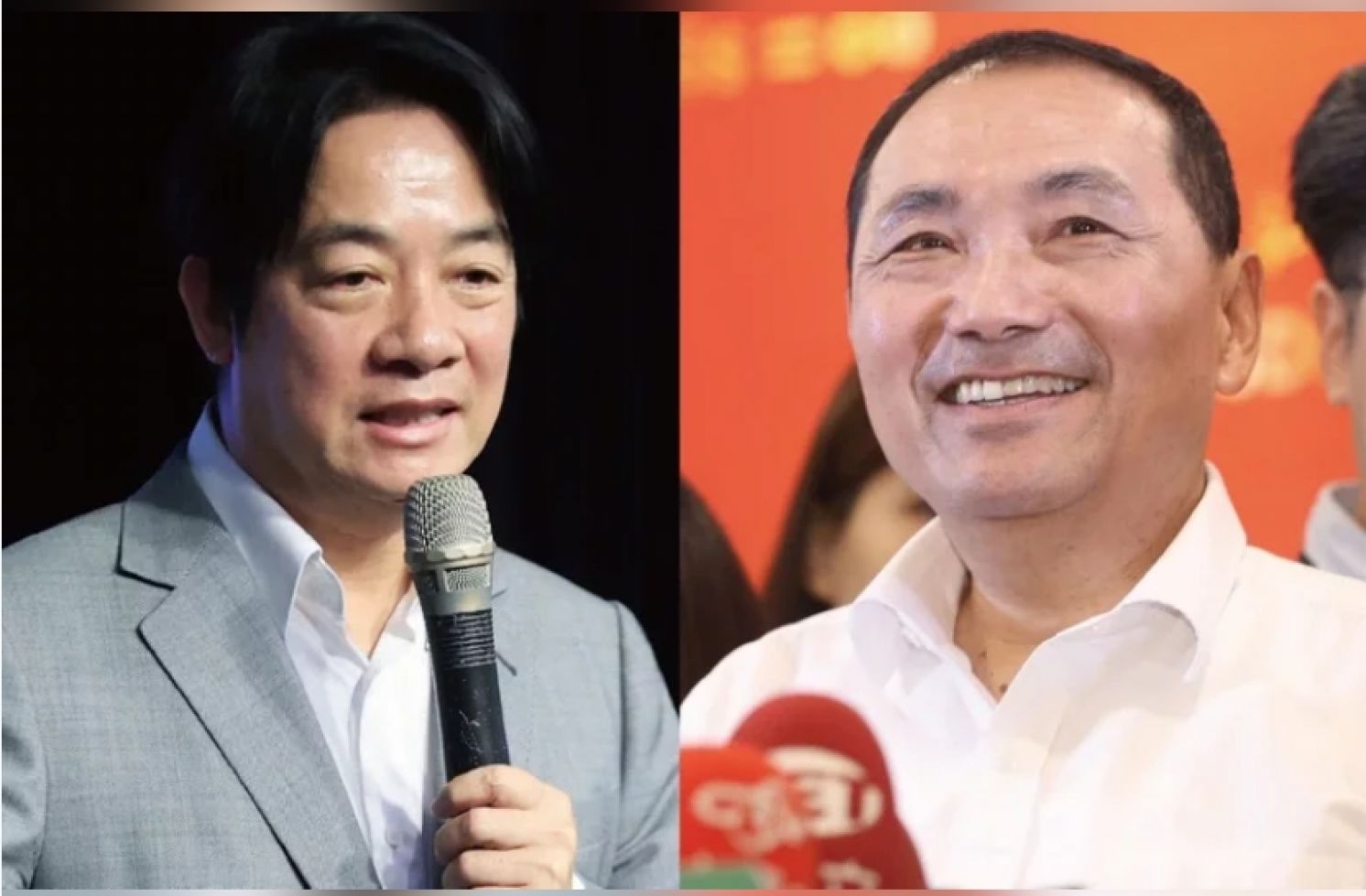
Presidential Race:Lai versus Hou on the Diplomatic Battleground
United Daily News Commentary, August 3, 2023
The presidential election has turned into a diplomatic battleground. While Kuomintang (KMT) presidential candidate, Mayor Hou Yu-ih of New Taipei City, was still on his visit to Japan, the Office of the President announced that Vice President William Lai, who is also the Democratic Progressive Party’s (DPP) presidential candidate, will be transiting through the United States en route to Paraguay to attend the inauguration of President Santiago Peña on August 15. The only common factor in both diplomatic events is the United States. While Mr. Lai's trip is aimed at repairing the trust with the United States, Mr. Hou’s strategy to gain U.S. trust starts with a visit to Japan before his U.S. visit. However, for the United States and Japan, the most significant difference between these two candidates lies not in the issue of Taiwan's independence or reunification but in who can act more cautiously and avoid causing trouble.
Due to Mr. Lai’s current position as vice president, the possibility of him visiting Japan is low, making his transit through the United States the only opportunity for international publicity. However, due to his alleged untimely remarks calling “entering the White House” the objective of Taiwan’s president, this visit has been seen as a "Chen Shui-bian 2.0," in reference to President Chen’s transit visit to the U.S. in 2007. The Biden administration arranged for Mr. Lai to transit through New York on his way to Paraguay and through San Francisco on his way back, seemingly following the customary practices for the transit of heads of state and vice presidents. Nevertheless, the duration of transit has been notably compressed. He will only stay overnight in New York and depart for Paraguay the next day after attending a banquet for overseas Taiwanese. On his way back, he will return to Taipei directly through San Francisco.
There are two unusual aspects of Mr. Lai’s trip. The first being the loss of favorable treatment during this time’s “transit diplomacy.” There is a change in the atmosphere compared to last year when Mr. Lai had more than 10 video conferences with members of the U.S. Congress during his transit in Los Angeles, and to President Tsai Ing-wen’s transit stops in the United States earlier this year. This time Mr. Lai’s "transit diplomacy" has been downplayed. The second unusuality is an upgrade in the rank of his entourage. On this trip, Secretary-General Lin Chia-lung and Deputy Secretary-General Huang Chong-yen of the Office of the President will accompany Mr. Lai as "diplomatic guardians" assigned by President Tsai. In contrast to when Mr. Lai transited through the U.S. to Honduras in 2022, he was accompanied by lower-ranking officials, including Deputy Secretary-General Li Chun-rong.
With the lack of "transit diplomacy" this time, President Tsai’s assigning of people to accompany Mr. Lai raises questions about how the Biden administration views Presidential Candidate Lai. The United States allowed Mr. Lai to simply transit, deliberately maintaining fairness between candidates from the blue, green, and white camps, but the act of not expressing their stance is, in itself, a stance.
In contrast to Mr. Lai's unusually low-key visit, Mr. Hou’s visit to Japan seems to send a new signal unexpectedly.
Mr. Lai’s Taiwan independence stance failed to garner endorsement from the United States, so he continues to reiterate former Japanese Prime Minister Shinzo Abe’s statement that “a Taiwan emergency is a Japanese emergency," attempting to package Taiwan-Japan relations as a talisman for Taiwan's independence. In contrast, Mr. Hou utilized his visit to Japan to promote the idea of "stability in the Taiwan Strait, Taiwan's security, and Japan's peace of mind." He advocated resuming economic and cultural exchanges between both sides of the Taiwan Strait to rebuild trust and suggested that Taiwan should avoid causing trouble for the United States and Japan.
This difference in approach reveals that William Lai heavily relied on a close association with former Japanese Prime Minister Shinzo Abe. On the other hand, Mr. Hou aligns more closely with current Japanese Prime Minister Fumio Kishida’s cabinet, prioritizing stability. By aligning with PM Kishida’s approach, the KMT is not only clarifying its stance of not being completely pro-China but also securing a strategic position.
In analyzing Mr. Hou’s discussions and visit arrangements regarding national security during his visit to Japan, there are some highlights. Being the first KMT presidential candidate to visit Japan in 16 years, and the show of respect for the U.S. Indo-Pacific Strategy framework are both highlights of the trip. Another critical point is Hou’s strategic stance on mapping out collective interests between both sides, placing the interests of reducing of tensions in the Taiwan Strait through cross-strait dialogue and Taiwan-Japan cooperation in the same basket. All these, and especially the latter one aligns well with the latest diplomatic approach of Mr. Kishida’s cabinet.
China and the United States are actively promoting the resumption of high-level dialogue. Mr. Kishida revealed his intention to visit China, aiming to facilitate economic exchanges between Japan and China and promote a thaw in their relationship. There is a similarity between the approach of Mr. Hou and that of Mr. Kishida, which could allow Washington to have a better understanding of Mr. Hou before his visit to the United States.
As Mr. Lai continually criticizes Mr. Hou for accepting the “1992 Consensus” as a false peace, the Kuomintang (KMT) has been working to gain trust from the United States and Japan to shake off the “red hat” (Communist) label. Mr. Hou explicitly stated in Japan that Taiwan should not be confined to the framework of the “1992 Consensus.” It remains uncertain when Mr. Lai will candidly distance himself from his former stance as “a pragmatic worker of Taiwan independence."